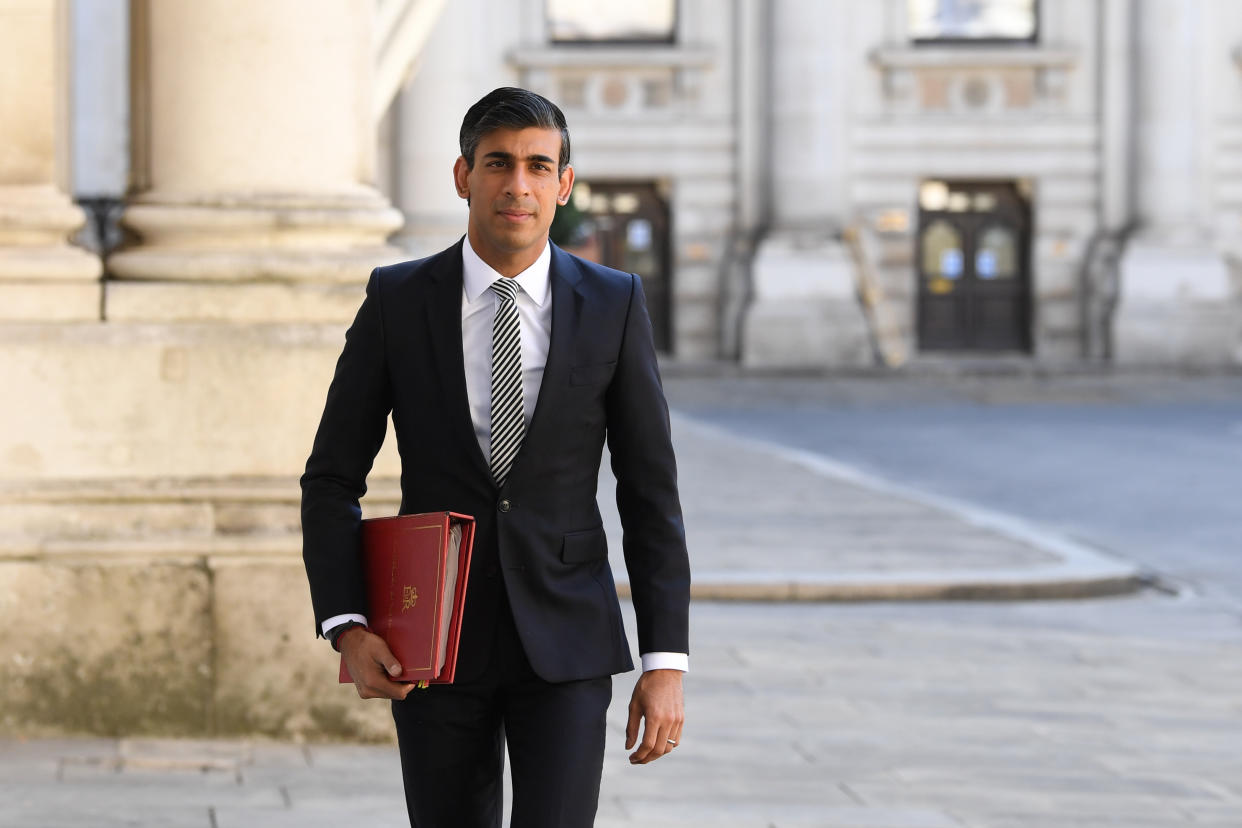Coronavirus: UK public debt breaks through £2tn for the first time

Britain’s public debt has burst through the £2tn ($2.65tn) mark for the first time, according to official figures.
New data from the Office for National Statistics (ONS) on Friday shows public debt at the end of July was bigger than the size of the entire UK economy for the first time in more than half a century.
Analysts said UK government borrowing this year was on track to hit its highest share of GDP since the Second World War, despite coming in lower than expected in recent months.
The government has ramped up spending on support for firms, workers, and public services to alleviate the devastating economic damage of the coronavirus and lockdown measures this year.
Several business loan programmes, the furlough scheme, grants for the self-employed, a temporary stamp duty holiday, and emergency cash for public transport operators are among the crisis measures to have pushed up spending.
But GDP and tax receipts have taken a heavy hit as firms’ and workers’ incomes have plummeted, with many tax payments also deferred.
READ MORE: UK retail sees stronger-than-expected rebound in July
It has forced UK chancellor Rishi Sunak to significantly raise government borrowing. Total borrowing between April and July was almost three times higher than the entire previous financial year.
UK government borrowing in July came in at £26.7bn, the fourth highest in any month since records began in the early 1990s.
But it was still £1.9bn lower than expected by analysts, while June borrowing was also revised down.

The ONS said July was also the first time debt had exceeded GDP since 1961. It totalled 100.5% of GDP, a surge of 20.4 percentage points compared to a year earlier.
The statistics body had previously said May was the first time debt was larger than the size of the economy. But the GDP figures for May have since been revised up, taking debt below the 100% mark.
READ MORE: Economist warns post-crisis austerity would spark ‘almighty backlash’
Samuel Tombs, chief UK economist at Pantheon Macroeconomics, said borrowing was likely to jump again in August. The government will make its second round of self-employment income support scheme (SEISS) grants, and is funding restaurant discounts through the Eat Out to Help Out scheme.
Borrowing costs are near historic lows and the crisis continues to hammer the economy, but the chancellor has already signalled his desire to put the public finances on a more “sustainable” footing. He has asked government departments to look for savings.
The furlough scheme is one of the most expensive policies and is still subsidising millions of workers’ wages, costing £6.9bn in July. Many workers have returned to work but support is also being gradually tapered off and will end in October.
Firms, unions and economists have warned the wind-down of the scheme is already triggering job losses, and there are calls for it to be maintained for sectors unable or only partially able to re-open.

 Yahoo News
Yahoo News 
